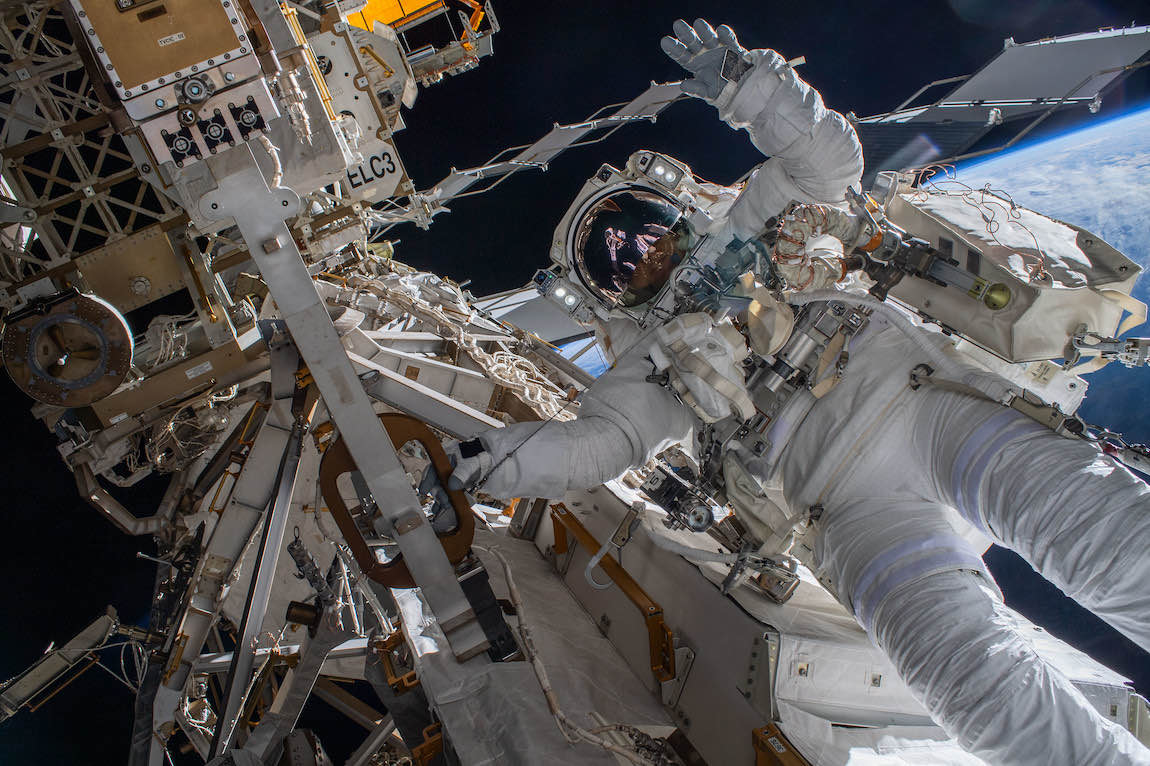24.08.2022

SpaceX’s Cargo Dragon spacecraft splashed down in the Atlantic Ocean northeast of Cape Canaveral Saturday, wrapping up a 37-day flight to the International Space Station and returning home with experiments and a leaky spacesuit for troubleshooting.
The automated cargo freighter with more than 4,000 pounds of hardware and experiment specimens parachuted into the Atlantic Ocean off the coast of Florida at 2:53 p.m. EDT (1853 GMT) Saturday. A SpaceX recovery boat was on station to raise the capsule from the sea for the trip back to Cape Canaveral.
The splashdown marked the end of SpaceX’s 25th round-trip logistics flight to the space station since 2012, and the third flight of this reusable Dragon cargo capsule for NASA’s Commercial Resupply Services program.
The Dragon spacecraft brought home a spacesuit worn by European Space Agency astronaut Matthias Maurer in March, when the station crew noticed water leaking in Maurer’s helmet after he returned to the lab’s pressurized airlock. NASA has suspended use of U.S. spacesuits for non-emergency spacewalks until the suit is returned to Earth for inspection and analysis.
Undocking of the SpaceX capsule from the space station’s Harmony module occurred at 11:05 a.m. EDT (1505 GMT) Friday, setting up for a deorbit burn with the capsule’s Draco thrusters at 2:04 p.m. EDT (1804 GMT) Saturday.
The Dragon spacecraft jettisoned its disposable trunk section just before the deorbit burn. The trunk will largely burn up during a later uncontrolled re-entry into the atmosphere, when aerodynamic drag forces it back to Earth.
The reusable pressurized section of the Dragon capsule re-entered the atmosphere over the United States, flying from northwest to southeast on a descending node entry track. A heat shield protected the capsule from temperatures that reached thousands of degrees during the scorching re-entry.
The Dragon spacecraft’s undocking and return to Earth was delayed a day due to a bad weather forecast in the recovery zone off the Florida coast.

The CRS-25 mission launched July 14 from NASA’s Kennedy Space Center in Florida atop a Falcon 9 rocket. The Dragon cargo freighter docked with the space station July 16, and astronauts began unpacking science experiments, fresh food, spare parts and other supplies.
The delivery last month carried 5,881 pounds (2,668 kilograms) of cargo to the station and its seven-person crew, including 4,682 pounds (2,124 kilograms) of equipment inside the Dragon’s pressurized cabin. Another 1,199 (544 kilograms) of cargo was stowed inside Dragon’s unpressurized rear cargo bay, or trunk.
There were also spare parts delivered by the Dragon spacecraft for the space station’s toilet, a spare catalytic reactor and ion exchange bed for the station’s water recycling system, and brine processor assembly bladders to recover additional water from urine, enhancing the research lab’s water reclamation capability.
The Dragon spacecraft also delivered five NASA-sponsored CubeSats to the space station for deployment though the Japanese Kibo lab module.
During its flight to the station, the resupply mission carried a spare battery charge/discharge unit for the station’s power system in the Dragon trunk, next NASA’s Earth Surface Mineral Dust Source Investigation, or EMIT, instrument. Like EMIT, the battery charge/discharge unit was robotically extracted from the Dragon’s rear cargo bay and placed on a mounting post outside the station.
Developed at NASA’s Jet Propulsion Laboratory, the $118 million EMIT instrument will measure the mineral content of the world’s desert regions, the source of global dust storms that can impact climate and weather worldwide.
NASA managers were eager for the Dragon spacecraft to bring the leaky spacesuit back to Earth. The water leak found after Maurer’s spacewalk in March was similar to the problem that caused a spacewalk emergency in 2013 when European astronaut Luca Parmitano had to cut short a spacewalk due to a water leak.
Parmitano had trouble breathing and lost visibility as water filled his helmet, but he escaped injury in one of the most dangerous spacewalk incidents in modern space history.
Maurer didn’t notice his water leak until he was back inside the station. But NASA officials don’t want to stage any non-emergency spacewalks until completing an investigation into the water leak.
“We’ve got to get that suit home got take a look at it as part of the investigation to really try to understand what happened to the suit, and that’ll be part of what we need for our assessment for our eventual readiness when we look at returning back to nominal EVAs (spacewalks),” said Dana Weigel, NASA’s deputy space station program manager.
The next planned spacewalks on NASA’s calendar are scheduled late this year, when the next SpaceX Dragon cargo mission will deliver a fresh set of solar arrays to the station. The astronauts will help install the new solar arrays, requiring at least two spacewalks to finish the job.
Other cargo the station astronauts packed inside the Dragon spacecraft for return to to Earth included an experiment package that exposed new materials and components to the harsh environment of space. Scientists will study the materials back on Earth to learn how the specimens, such as new spacecraft materials and wearable radiation protection, weathered the low Earth orbit environment.
The CRS-25 mission also returned with an ESA experiment called the Bioprint FirstAid Handheld Bioprinter, which enabled the use of “bio-inks” to create a band-aid patch over an injury using the the patient’s own cells. A technology demonstration experiment for a new spacesuit cooling system also came back to Earth on the Dragon spacecraft.
Quelle: SN
